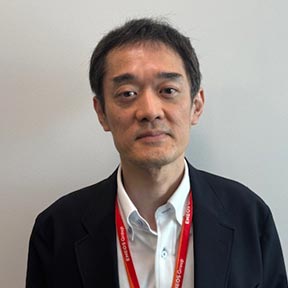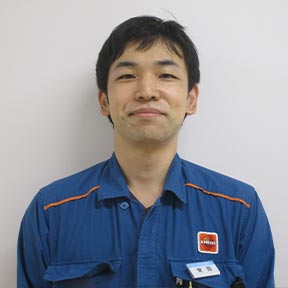2025.08.21

Ride the Expo 2025, Osaka, Kansai Shuttle Bus— Using Synthetic Fuel for the First Time in Japan

ENEOS is supplying carbon-neutral synthetic fuel to an Expo 2025 Osaka, Kansai, Japan shuttle bus—Japan’s first application of synthetic fuel in a commercial vehicle. This article explores the possibilities of synthetic fuel produced from CO2 and hydrogen.
In April 2025, ENEOS started supplying synthetic fuel for a bus that shuttles visitors to and from Expo 2025 Osaka, Kansai, Japan. The initiative is part of the company’s joint project with West Japan JR Bus Company and Hino Motors, Ltd. that is aimed at operating a shuttle bus powered by synthetic fuel. It is the first commercial vehicle in Japan to run on fuel synthesized from CO2 and hydrogen in an integrated manner. Synthetic fuel has been attracting attention as an energy source that can promote carbon neutrality. ENEOS aims to further drive innovation in the technology for synthetic fuel and raises its public recognition through the exposure generated by Expo 2025.
During Expo 2025, shuttle buses run between the North Exit of JR Osaka Station (Umekita Green Place bus parking) and Yumeshima, the Expo venue. One of these buses uses synthetic fuel. Koji Shimada, an ENEOS Chief Researcher at the Business Planning Promotion Group of the Central Technical Research Laboratory’s Technology Strategy Office explains as follows.
“When you ride the synthetic fuel bus, it feels no different from a conventional bus. It’s remarkable that the bus does not need any extraordinary specifications tailored to synthetic fuel. The advantage of synthetic fuel is that it can replace conventional oil-derived fuel without requiring vehicle modifications, so existing buses using diesel fuel can also run on synthetic fuel. It allows automobile manufacturers to continue using the technology they have developed while also achieving carbon neutrality. It’s a win-win situation, as it were, and that’s a major benefit of synthetic fuel.”

Umekita Green Place bus parking area (schematic illustration)
Source: West Japan Railway Company
Synthetic fuel is a virtually limitless resource
The term “synthetic fuel” may not be familiar to most. Hideo Tsuneoka, an ENEOS Chief Researcher with the Synthetic Fuel & Processing Group of the Central Technical Research Laboratory’s Sustainable Technology Center, clarifies as follows.
“Synthetic fuel is produced from CO2 and hydrogen. The CO2 is collected from factories and the atmosphere, while the hydrogen is created with electricity derived from renewable energy as well as water. As society transitions to carbon neutrality, synthetic fuel is being viewed as a key environmental solution.”
The most significant feature of synthetic fuel is, above all, its capacity to reduce CO2. Next is its interchangeability with conventional oil products, which allows vehicles (such as automobiles, airplanes, and ships) and infrastructure (such as refineries and service stations) to be used without remodeling. In addition, unlike electricity used for electric vehicles (EVs), synthetic fuel is liquid and can be stored. This makes it beneficial in providing a stable energy supply and strengthening energy resilience.
“Synthetic fuel emits CO2 when combusted in an engine, just like conventional gasoline and diesel fuel, but as it consumes CO2 as a raw material in the production process, the CO2 emissions are offset,” Shimada says. “This is why the fuel is drawing attention as a carbon-neutral fuel.”
An issue with synthetic fuel is that it is slightly more expensive than gasoline and diesel fuel. Therefore, ENEOS is striving to reduce costs through technological development.
According to Tsuneoka, “Oil companies are seeking to develop carbon-neutral fuels, including those derived from biological sources. ENEOS set its sights on producing synthetic fuel from CO2 and hydrogen based on its history of developing Gas-to-Liquids (GTL) technology for producing liquid fuels from natural gas as a member of the Nippon GTL Technology Research Association. Combining GTL technology with the catalyst reaction/process technologies developed through refining petroleum, ENEOS operates Japan’s first demonstration plant for producing synthetic fuel from CO2 and hydrogen in an integrated manner. We have an abundance of raw materials at hand, because CO2 can be captured from factories and the atmosphere, while hydrogen can be produced by electrolyzing water with renewable energy.”

Synthetic fuel production process
Under the Green Innovation Fund Project run by the New Energy and Industrial Technology Development Organization (NEDO), ENEOS constructed a demonstration plant to produce synthetic fuel within its Central Technical Research Laboratory, and began production in September 2024.
Unlike EVs, no major infrastructure investment is required
Currently, biofuels cost less than synthetic fuel, but as biological sources are limited, the issue of supply-demand balance remains. This is why synthetic fuel will undoubtedly become indispensable in the future, according to Shimada.
“By the 2030s, based on the Japanese government’s policy, synthetic fuel will actually be used for vehicles such as automobiles and airplanes,” he expects.
While there are potential competitors in the field of synthetic fuel, ENEOS boasts the world’s highest class of technological expertise.
Will carbon-neutral fuels really gain prevalence?
According to Shimada, “The use of sustainable aviation fuel (SAF), a next-generation fuel primarily derived from biomass such as waste cooking oil, is being encouraged today. An international target has been set to reduce carbon emissions by five percent by 2030 compared to the 2019 levels through the use of SAF. Therefore, several countries have started mandating the adoption of SAF. As some companies are making voluntary carbon neutrality efforts to reduce CO2 emissions, the use of carbon-neutral fuels is expected to expand, despite their somewhat higher costs.”
Automobiles are increasingly electrified, but electrifying aircraft and ships is challenging because of their massive sizes. For this reason, airplanes and ships are expected to start adopting carbon-neutral fuel ahead of other modes of transportation.
“Given the shortage of charging stations and insufficient domestic power generation capacity, massive infrastructure investments are required to mainstream EVs,” Shimada explains. “Conversely, synthetic fuel can be used with existing automobiles based on the currently available infrastructure. The widespread use of synthetic fuel, therefore, would bring major benefits to society. ENEOS will continue to provide a stable supply of oil-derived products, while also taking the initiative in helping society achieve carbon neutrality. I strongly recommend that Expo 2025 visitors use the shuttle bus powered by our synthetic fuel.”
INTERVIEWEES

Koji Shimada
Senior Researcher
Business Planning Promotion Group
Technology Strategy Office
Central Technical Research Laboratory

Hideo Tsuneoka
Senior Researcher
Synthetic Fuel/Process group
Sustainable Technology Center
Central Technical Research Laboratory
ENEOS Holdings, Inc.
1-1-2 Otemachi, Chiyoda-ku, Tokyo 100-8162, Japan
Established in 2010. Engages in petroleum products, oil & natural gas exploration and production, high performance materials, electricity, and renewable energy businesses. Nippon Oil Corporation and Mitsubishi Oil Co., Ltd. merged in 1999 and became Nippon Oil Corporation (Shin Nippon Sekiyu in Japanese), which integrated its management with the Nippon Mining & Metals Group in 2010 to launch the JX Group. In 2016, the JX Group integrated management with the TonenGeneral Group, which led to the formation of ENEOS Holdings, a company listed on the Nikkei 225. The company owns a corporate baseball team (ENEOS Baseball Club) and a women’s basketball team (ENEOS Sunflowers).
